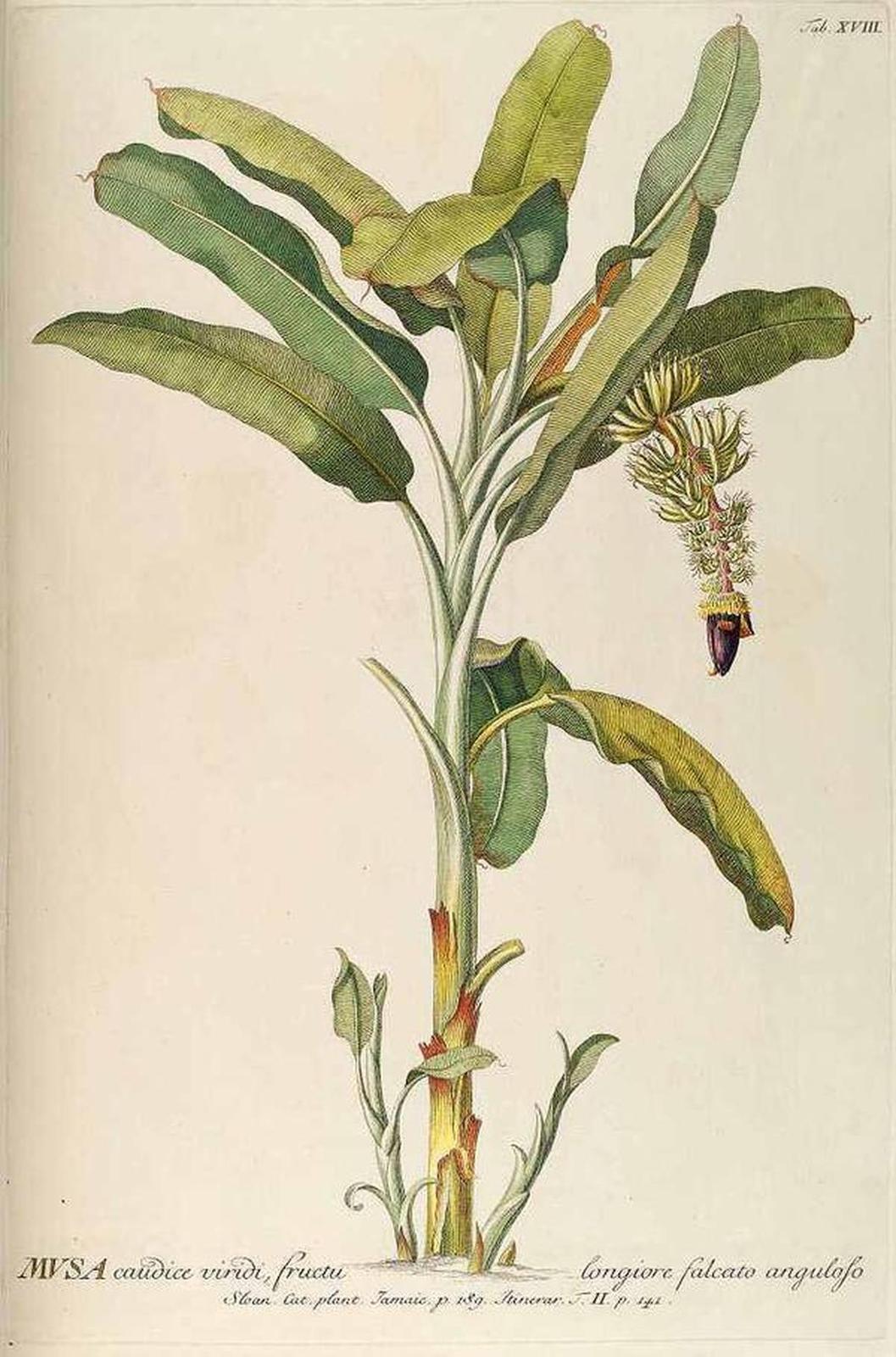Musa × paradisiaca L.
MusaceaeEl bananero actual es un híbrido, cultivado en todas las regiones tropicales del mundo por sus apreciados frutos, pero también por su carácter ornamental y por las fibras textiles que proporciona. Originario del sudeste asiático y del Pacífico, según el agrónomo andalusí Ibn al-Awwam llegó a la Península Ibérica de manos de los árabes hacia el siglo XII, si bien su cultivo quedó restringido a las zonas de clima más cálido como por ejemplo Sevilla. La propia palabra banana parece derivar del término árabe para designar a los “dedos” por la similitud del fruto con esa parte del cuerpo humano. El cronista Pedro Mártir de Anglería (c.1455-1526) encontró bananeros en la América tropical, según nos cuenta en sus Décadas de Orbo Novo. Su forma de acercarse a esta planta es la típica de los cronistas de la época, intentando identificar lo nuevo con lo ya conocido o citado en las fuentes clásicas. Anglería lo llama musa y recoge de dónde toma el nombre: los extranjeros traficantes en inútiles aromas y perfumes y olores de la Arabia que afeminan, y en inútiles perlas, que fueron a aquellas tierras [Arabia] en busca de ganancias, llaman a esas frutas musas. El nombre de musa fue popular entre los árabes para referirse al plátano. Es un término por lo demás tomado del latín, pues proviene de Antonio Musa, físico del emperador Octavio Augusto en el siglo I a.C. La descripción hecha a partir de una fotografía realizada en torno a los años 1850-51, perteneciente al álbum del Vizconde Vigier, permite suponer que en el Jardín del Príncipe del Real Alcázar había ya plantados, al menos en torno a esa fecha, algunos especímenes de bananeros.
Procedencia
Oriental/AsiáticoCalendario
Hábitat
Morfología
 Planta
Planta
 Abanico
Abanico
 Simple
Simple
 Elíptica
Elíptica
 Oblonga
Oblonga
 Otras disposiciones
Otras disposiciones
 Partido
Partido
 Entero
Entero
 Obtusa
Obtusa
 Cordada
Cordada
 Obtuso
Obtuso
 Perenne
Perenne
